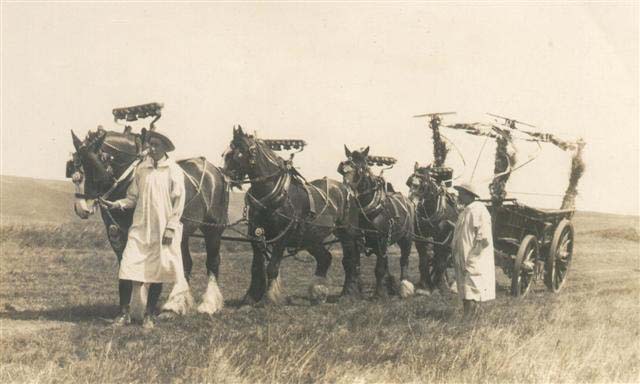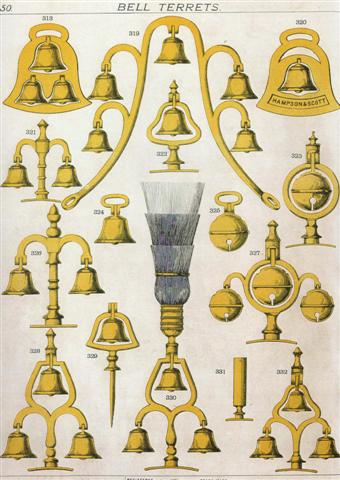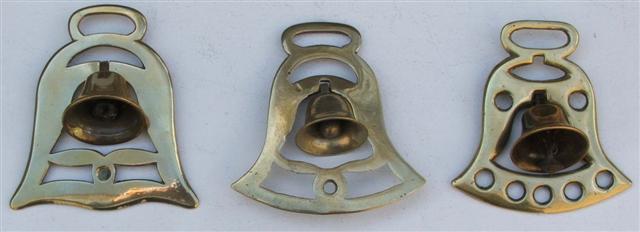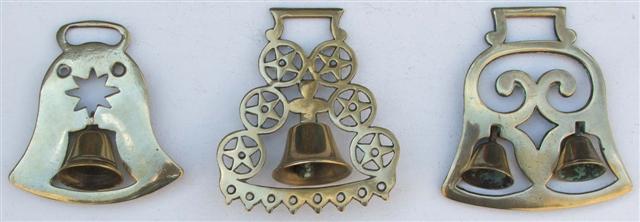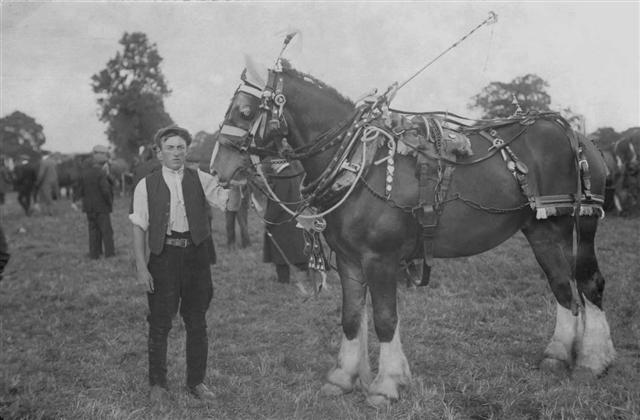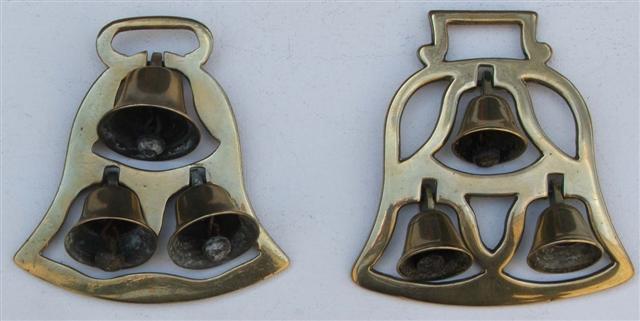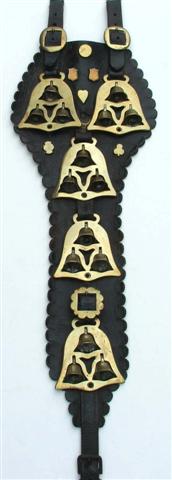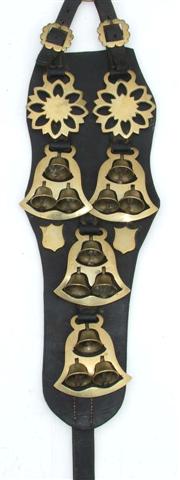Bell Brasses
The NHBS publication Horse Bells (1988) covers the history of this subject in detail beginning with the earlier types such as rumbler bells and latten bells. However this section looks only at those particularly associated with decorated heavy horse harness. These are bell-terrets, bell rosettes and bell face-pieces. In the 19th century, face piece bell brasses were two or three times more expensive than ordinary brasses. In consequence today none can be considered common and most can only be described as rare.
Below: an impressive four-horse team from Kent displaying belfries containing open-mouthed latten bells typical of the early 19th C.
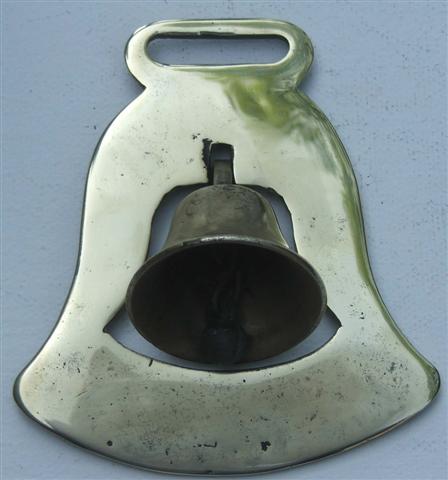
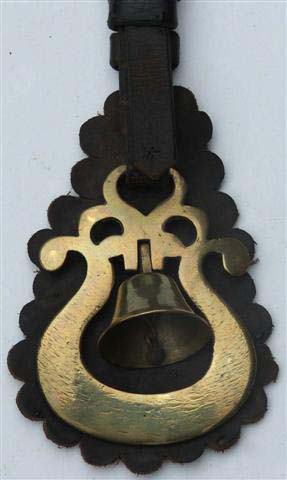
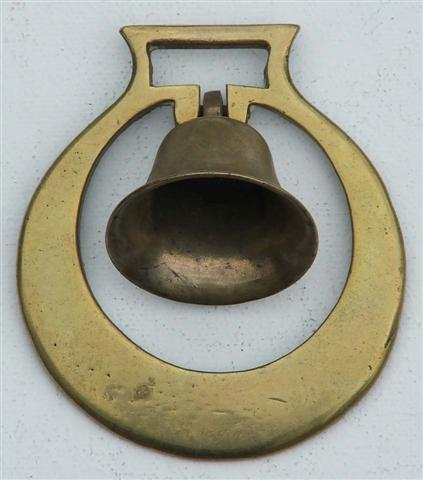

The unique stars-in-ring brass (centre below) is the only bell face piece known to have the bell mounted on a large projecting stud which was burred over when the bell was fitted. This considerably restricts the movement of the bell when compared with the usual gudgeon or pivot on which the bell swings back and forth. Nonetheless it rings well enough when swinging on the leather harness loop. On the far right is a two-bell brass made by William Overton in Walsall and probably was the horseman’s most favoured two bell type.
Below. an unknown 3rd Prize Winning turn out. Note the two triple-bell brasses mounted side-by-side on the bottom of the martingale.
Below, two three-bell designs. The left hand brass is illustrated in Hampson and Scott’s ‘Equine Album’ and is the most likely three-bell brass the collector might find. On the other hand William Overton’s three-bell version is much rarer.
Above, a pair of splendid martingales containing rare three-bell cast brasses and a very nice example of a stamped bell martingale. The single bell brass is found in both cast and stamped form and both are relatively easy to find.

